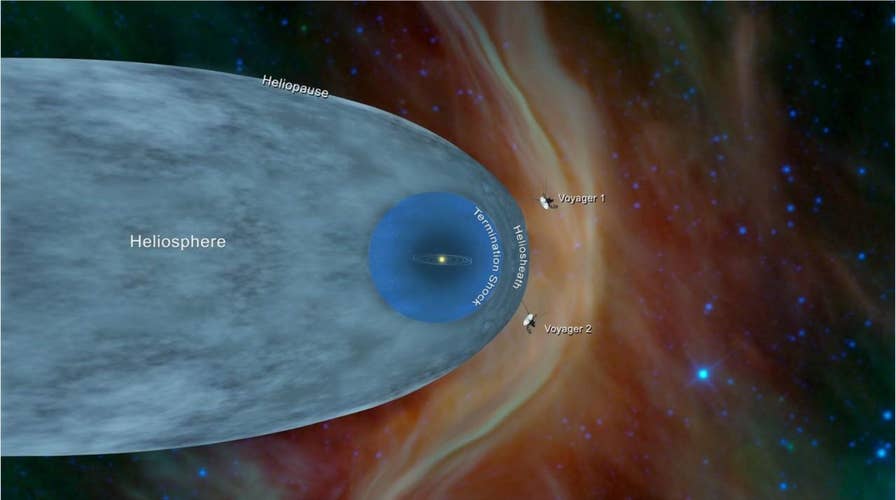NASA Voyager 2 enters interstellar space
NASA has made history once again, as Voyager 2 has entered interstellar space — only the second man-made object ever to do so.
NASA has made history once again, as Voyager 2 has entered interstellar space — only the second man-made object ever to do so.
The space probe crossed the outer edge of the heliosphere, which is the bubble caused by solar wind and encompasses space "far past the orbit of the planets," on Nov. 5, NASA said in a statement. This boundary is known as the heliopause and is "where the tenuous, hot solar wind meets the cold, dense interstellar medium," the government agency also said.
NASA ASTRONAUT DESCRIBES 'PROFOUND POTENTIAL' OF BREAKTHROUGH SPACE EXPERIMENTS
“Voyager has a very special place for us in our heliophysics fleet,” said Nicola Fox, director of the Heliophysics Division at NASA Headquarters in the statement. “Our studies start at the Sun and extend out to everything the solar wind touches. To have the Voyagers sending back information about the edge of the Sun’s influence gives us an unprecedented glimpse of truly uncharted territory.”
Voyager 2's older twin, the Voyager 1 spacecraft, crossed the boundary in August 2012. Unlike its older twin, Voyager 2 still has a working instrument that NASA says "will provide first-of-its-kind observations of the nature of this gateway into interstellar space."
Both Voyager space crafts are loaded with memorabilia from Earth's culture, including a Golden Record of Earth, which is comprised of sounds, pictures and messages. NASA said that since the spacecraft could last billions of years, they may one day "be the only traces of human civilization."
NASA was able to determine that Voyager 2 left the heliosphere thanks to the onboard Plasma Science Experiment (PLS), which NASA said stopped working on the Voyager 1 in 1980. The PLS uses the electric current of the plasma to detect different measurements of the solar wind and when it detected a "steep decline in the speed of the solar wind particles," a decline that went to 0, scientists are confident the probe has indeed gone into interstellar space.
The spacecraft, which launched Aug. 20, 1977, at a cost of $895 million, was primarily designed to study the outer planets, notably Jupiter and Saturn. But after making several discoveries on these planets, including active volcanoes on Jupiter's moon Io and understanding the intricacies of Saturn's rings, the mission was extended and the craft went on to visit and explore Uranus and Neptune.
It is now more than 11 billion miles from Earth, though NASA is still able to communicate with the craft. However, due to its distance, the lag between sending information and receiving it back on Earth takes approximately 16.5 hours, NASA said.
“There is still a lot to learn about the region of interstellar space immediately beyond the heliopause,” said Ed Stone, Voyager project scientist based at Caltech in Pasadena, Calif. in the statement.
HOW AMERICA CAN GET ITS SLICE OF THE $1 TRILLION SPACE ECONOMY
Despite the probe entering interstellar space, Voyager 2, along with Voyager 1, have not left the solar system and won't for quite a while, NASA said. The space agency said Voyager 2 will leave the Oort Cloud, "a collection of small objects that are still under the influence of the Sun’s gravity," in approximately 30,000 years, so it is still being influenced by the Sun's gravity to some extent.
“I think we’re all happy and relieved that the Voyager probes have both operated long enough to make it past this milestone,” said Suzanne Dodd, Voyager project manager at NASA’s Jet Propulsion Laboratory in Pasadena, Calif. “This is what we've all been waiting for. Now we’re looking forward to what we’ll be able to learn from having both probes outside the heliopause.”
Follow Chris Ciaccia on Twitter @Chris_Ciaccia

